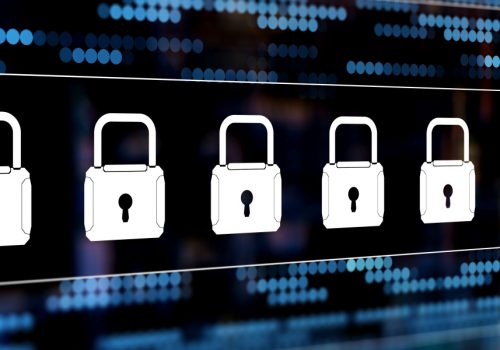Blockchain technology has gained significant traction in recent years, as the backbone of cryptocurrencies like Bitcoin. However, its potential applications extend far beyond digital currencies, presenting transformative opportunities for cybersecurity, data privacy, and transparency. As data breaches and cyber threats continue to rise, organizations and individuals seek innovative solutions to protect their digital assets. Blockchain technology offers an array of opportunities to enhance security, ensure privacy, and promote transparency in various sectors. In this article, we will delve deeper into these opportunities, exploring how blockchain technology can secure your data and transactions while reshaping the cybersecurity landscape.
Decentralization and Security
At its core, blockchain is a distributed ledger technology that records data across a network of computers, eliminating the need for a central authority. This decentralized architecture makes it inherently more secure and resistant to cyber-attacks, as there is no single point of failure. In contrast to traditional centralized systems, attackers cannot easily compromise the entire network, which significantly reduces the likelihood of data breaches and system failures.
Immutable Data Records
Blockchain ensures data integrity and prevents unauthorized tampering by using cryptographic hashing. Each block in the chain contains a unique hash that corresponds to the data it stores. As new blocks are added, they also include the previous block’s hash, creating an interlinked chain. Altering any data would require changing the hash of all subsequent blocks, making tampering virtually impossible.

Transparency and Trust
The public nature of blockchain and its consensus mechanism fosters trust and transparency between parties. All transactions are visible to network participants, reducing the need for intermediaries and decreasing the likelihood of fraud. This increased trust can streamline processes and eliminate inefficiencies in industries like finance and supply chain management. However, it is essential to recognize the current limitations in the usability and accessibility of blockchain-based services for mainstream adoption.
Many blockchain-based services have not yet reached a stage where they are conveniently usable by the average consumer. The technology’s complexity and the required technical literacy can create barriers for widespread adoption by end-users, if they are exposed to the technology without certain quality of life and risk-mitigating features. While blockchain networks promote transparency and trust, their user interface and experience often lack the simplicity and intuitiveness found in traditional systems. This leads to the logical conclusion that for mainstream adoption, companies with technical literacy and an alreadyestablished level of trust can fill the role of harnessing the potential of this technology and providing advantages to their customers in an indirect way.
Ensuring that blockchain-based services cater to the needs of end-users is crucial for driving adoption and realizing the technology’s full potential. This includes not only improving user experiences but also solving the existing problems regarding privacy, data control, and regulatory compliance.
To overcome these challenges, developers and stakeholders must invest in creating user-friendly interfaces, simplifying the onboarding process, and providing comprehensive educational resources to help users navigate blockchain systems safely and reliably. Additionally, collaboration between the blockchain community, regulators, and consumer advocacy groups can ensure that consumer interests are prioritized and adequately addressed.
By tackling these usability and accessibility challenges, blockchain technology can become more appealing to the mainstream, enabling broader adoption and facilitating its potential to improve cybersecurity and secure data and transactions across various industries.
Secure Identity Management
Blockchain technology has the potential to revolutionize digital identity management by enabling self-sovereign identity (SSI) systems. SSI is a user-centric approach to identity management, allowing individuals to own, control, and share their personal information without relying on a centralized authority. By combining blockchain technology with SSI, we can create secure, privacy-preserving, and legally binding digital contracts in the digital world.
Blockchain and Self-Sovereign Identity
In a blockchain-based SSI system, individuals can store their digital identity credentials, such as birth certificates, passports, and driver’s licenses, on a secure, decentralized ledger. These credentials are cryptographically signed by the issuing authority (e.g., government agencies, educational institutions) and can be verified by relying parties (e.g., banks, employers) without disclosing the underlying data.
When an individual needs to provide identity information to a relying party, they can do so using verifiable credentials. These credentials are tamper-proof, cryptographically secure digital attestations that can be shared and verified easily. The individual maintains control over their data, sharing only the necessary information with the relying party. This approach enhances privacy and reduces the risk of identity theft and unauthorized access to personal information.
Enabling Legally Binding Digital Contracts
The combination of blockchain technology and self-sovereign identity paves the way for legally binding digital contracts.
Smart contracts, which are really to be understood as self-executing agreements with terms directly written into code, can be employed in conjunction with SSI to create secure digital contracts. When parties enter into a digital contract, they can use their blockchain-based SSI credentials to authenticate their identities and sign the contract using their private keys.

These digital signatures are cryptographically secure, ensuring that the contract is signed by the intended parties and providing non-repudiation. The smart contract’s terms can be automatically enforced upon meeting predefined conditions, reducing the risk of human error, fraud, and disputes. By leveraging blockchain technology, SSI, and smart contracts, we can create a robust framework for digital contracts that are secure, privacy-preserving, and legally binding. This framework has the potential to revolutionize various industries, such as finance, real estate, and legal services, by streamlining transactions, reducing costs, and enhancing trust between parties.
In conclusion, the integration of blockchain technology with self-sovereign identity and smart contracts has the potential to reshape digital identity management and enable legally binding digital contracts. The combination of empowering individuals to own and control their data, enhancing privacy, and facilitating secure transactions, can drive significant advancements in cybersecurity and data protection.
Smart Contracts and Secure Transactions
Smart contracts are self-executing agreements with the terms directly written into code, which are stored on a blockchain network. They offer several advantages over traditional Web 2.0 infrastructure in terms of security, transparency, and efficiency. In this section, we will explain in more detail how smart contracts work and how they lead to more secure transactions compared to traditional Web 2.0 systems.
How Smart Contracts Work
Smart contracts are designed to automatically execute transactions when predefined conditions are met, without the need for intermediaries. An example of this is enabling trustless, automated insurance payouts upon the occurrence of a predefined event, such as a flight delay, without requiring manual processing, intervention from an intermediary or the passenger having to request the refund in the first place. These smart contracts are written using programming languages like Solidity (for Ethereum) or other blockchain-specific languages.
Once deployed on the blockchain, smart contracts are immutable, meaning they cannot be altered or tampered with.
Each smart contract contains a set of rules that dictate how the contract will behave under specific conditions. These rules are encoded in the form of “if-then” statements. For example, a smart contract for a rental agreement might include a rule stating that if the renter pays the deposit, then the keys will be released to them. When the conditions outlined in the contract are satisfied, the contract automatically executes the corresponding actions, such as transferring funds or releasing digital assets.
Security Advantages Over Traditional Web 2.0 Infrastructure
Web 2.0 infrastructure refers to the centralized, serverbased architecture that underlies the current Internet, where data and services are primarily controlled by a limited number of intermediaries. Smart contracts offer several security benefits compared to traditional Web 2.0 infrastructure:
- Decentralization: Unlike traditional Web 2.0 systems that rely on centralized servers, smart contracts are stored on a decentralized blockchain network. This architecture eliminates single points of failure, making it more resilient against cyber-attacks, data breaches, and system failures.
- Immutability: Once a smart contract is deployed on the blockchain, it cannot be altered or tampered with. This feature ensures that the contract’s terms and conditions remain consistent and secure throughout its lifecycle.
- Transparency: Smart contracts are inherently transparent, as their code and transaction history are publicly visible on the blockchain. This transparency enables all parties involved to verify the contract’s integrity and reduces the likelihood of fraud or manipulation.
- Automation: Smart contracts automate transaction execution, reducing the risk of human error, fraud, and delays. By removing intermediaries and automating transactions, smart contracts streamline processes and enhance efficiency.
- Trust: Since smart contracts are enforced by the blockchain’s consensus mechanism, parties can trust that the contract will execute as intended without the need for a trusted third party. This trust minimizes disputes and enhances security in the transaction process.
By leveraging smart contracts, businesses and individuals can take advantage of a more secure, transparent, and efficient transaction process compared to traditional Web 2.0 infrastructure. As a result, smart contracts have the potential to transform various industries by enhancing cybersecurity, trust, and privacy.
Protection Against DDoS Attacks
Blockchain’s decentralized nature also offers protection against Distributed Denial of Service (DDoS) attacks. Distributed Denial of Service (DDoS) attacks are a type of cyber-attack where multiple systems are used to flood a targeted server, network, or website with an overwhelming volume of traffic, rendering it unavailable to its intended users. These attacks can cause significant downtime, disrupt services, and result in financial losses for affected organizations. In this section, we will explain how blockchain technology can effectively protect against DDoS attacks.
How Blockchain Technology Protects Against DDoS Attacks
Blockchain’s decentralized nature and unique architecture offer several advantages in combating DDoS attacks:
- Decentralization: Blockchain networks operate on a distributed ledger, which means that data is stored across numerous nodes (computers) rather than a single centralized server. This decentralization eliminates single points of failure, making it more challenging for attackers to target and overwhelm the entire network. As a result, blockchain networks are more resilient against DDoS attacks.
- Consensus Mechanism: Blockchain networks employ consensus mechanisms, such as Proof of Work (PoW) or Proof of Stake (PoS), to validate transactions and maintain network security. These mechanisms require participants to expend computational resources or stake digital assets, creating barriers for potential attackers. Launching a successful DDoS attack on a blockchain network would necessitate overpowering the network’s combined resources, which is often prohibitively expensive and difficult to achieve.
- Redundancy: Since all nodes in a blockchain network store a copy of the entire ledger, the system is inherently redundant. In the event of a DDoS attack targeting specific nodes, other nodes in the network can continue to operate and maintain the network’s functionality. This redundancy enhances the network’s resilience against DDoS attacks and ensures that services remain available even during an attack.
- Cryptographic Security: Blockchain networks utilize cryptographic techniques, such as digital signatures and hashing, to secure transactions and data. These techniques make it more challenging for attackers to inject malicious traffic or manipulate data during a DDoS attack, further enhancing the network’s security.
In summary, the decentralized architecture, consensus mechanisms, redundancy, and cryptographic security of blockchain technology provide robust protection against various cyber attacks. By leveraging these features, blockchain networks can maintain their availability and resilience even in the face of sophisticated cyber threats, offering a more secure alternative to traditional centralized systems.
Data Privacy and Confidentiality
Blockchain technology can provide concrete benefits for data privacy and confidentiality through the use of privacy-focused solutions such as zero-knowledge proofs, confidential transactions, and privacy-preserving smart contracts. These techniques enable secure data validation without revealing the underlying information, ensuring both data integrity and privacy. In this section, we will explore the specific benefits that blockchain technology can offer in terms of privacy.
- Selective Disclosure: Blockchain-based privacy solutions allow users to disclose only the necessary information to verify a transaction or fulfill a smart contract’s conditions without revealing their entire data set. This selective disclosure enhances privacy by minimizing the exposure of sensitive information to third parties.
- Confidential Transactions: Some blockchain platforms, such as Monero and Zcash, use advanced cryptographic techniques to obscure transaction details, such as the sender, recipient, and amount. This ensures transaction privacy and protects user data from potential surveillance or tracking.
- Privacy-Preserving Smart Contracts: Privacyfocused blockchain networks can implement smart contracts that preserve data privacy during execution. This allows users to engage in secure, private transactions without disclosing sensitive information to other network participants or third parties.
- Identity Anonymization: Blockchain technology can facilitate pseudonymous or anonymous transactions by using public keys as identifiers instead of personal information. This approach reduces the risk of identity theft and enhances user privacy during transactions.
- Data Sovereignty: Blockchain’s decentralized architecture empowers individuals to retain control over their data, allowing them to manage access permissions and share information on a need-to-know basis. This ensures that data privacy is maintained, and users retain sovereignty over their personal information.
By harnessing these privacy benefits, blockchain technology can provide robust protection for sensitive data and enable secure, private transactions across various industries.
As adoption continues to grow and privacy-enhancing solutions become more sophisticated, blockchain technology will play an increasingly crucial role in preserving data privacy and confidentiality in the digital world.

Real-World Applications
Blockchain technology has moved beyond cryptocurrencies, finding applications in various industries and transforming the way we conduct transactions and secure data. In this section, we will explore five famous use cases where blockchain is already being used in our daily lives.
Supply Chain Management
Blockchain technology is being used to enhance traceability, transparency, and efficiency in supply chain management. Companies like Walmart, IBM, and Maersk have implemented blockchain solutions to track goods from their origin to the end consumer, ensuring product authenticity and reducing the risk of counterfeit products. This real-time visibility into the supply chain helps businesses optimize their operations and respond to issues more effectively.
Digital Identity Management
As mentioned earlier, blockchain technology can facilitate secure identity management through self-sovereign identity (SSI) systems. Platforms like uPort, Sovrin, and Civic leverage blockchain to enable users to create and manage their digital identities, controlling who has access to their personal information. This approach enhances privacy, reduces the risk of identity theft, and streamlines the identity verification process for various services, such as banking and e-government.
Cross-Border Payments and Remittances
Blockchain technology is revolutionizing the way we send money across borders by providing faster, cheaper, and more secure transactions. Companies like Ripple and Stellar offer blockchain-based solutions that enable instant, low-cost international money transfers. By eliminating intermediaries and leveraging the decentralized nature of blockchain, these platforms reduce transaction fees and processing times compared to traditional methods.
Healthcare
Blockchain technology is being used to improve data security, interoperability, and patient privacy in the healthcare sector. Platforms like Medicalchain, Solve. Care, and BurstIQ enable secure storage and sharing of electronic health records (EHRs) on a decentralized ledger, allowing patients to control access to their medical data. This approach can streamline data exchange between healthcare providers, enhance patient privacy, and enable more personalized care.
Voting and Governance
Blockchain technology is being leveraged to improve the transparency, security, and efficiency of voting systems.
Projects like Voatz, Horizon State, and Follow My Vote use blockchain to ensure the integrity of election results by making voting records tamper-proof and publicly verifiable. This can reduce the risk of fraud, increase voter confidence, and promote more transparent and accountable governance.
Heavily Regulated Industry
In heavily regulated industries like aerospace, where human safety and reliability are critical, machines equipped with sensors can record torque levels for each screw on a blockchain-based system, ensuring tamper-proof, transparent documentation of essential manufacturing data, while facilitating real-time monitoring, traceability, and compliance with stringent quality standards.
These examples showcase the diverse applications of blockchain technology in our daily lives, demonstrating its potential to enhance security, transparency, and efficiency across various industries. As technology continues to mature, we can expect even more innovative applications that further improve data privacy and transform the way we interact in the digital world.
Challenges and Limitations
As promising as blockchain technology is, it faces several challenges, including scalability, energy consumption, and the need for standardization. In this section, we will discuss potential solutions that will help us overcome those problems, while blockchain technology matures with ongoing research and further prototype development.
Scalability: Inter-Blockchain Communication and Mesh Networks
Scalability remains a critical concern for blockchain networks, as they need to handle increasing transaction volumes to compete with traditional systems. Two examples of potential solutions to improve scalability include Inter- Blockchain Communication (IBC) and mesh networks.
IBC
IBC refers to the seamless exchange of data and value between different blockchain networks. By enabling crosschain communication, IBC can help distribute transactions across multiple networks, alleviating congestion and improving overall throughput.
Mesh Networks
Mesh networks, on the other hand, involve a decentralized network topology where nodes connect directly to each other, allowing data to be routed through multiple paths. This approach can enhance network efficiency and capacity by spreading transaction loads across the network more evenly.
Energy Consumption: Alternatives to Proof of Work
Proof of Work (PoW) is the consensus mechanism used by many blockchain networks, including Bitcoin. However, it is associated with high energy consumption due to the intensive computational power required to mine blocks. To address this issue, alternative consensus mechanisms have been proposed, such as Proof of Stake (PoS), Delegated Proof of Stake (DPoS), and Proof of Authority (PoA). These mechanisms consume significantly less energy than PoW while still providing a secure and decentralized consensus.

Standardization: ISO Efforts and Regulatory Guidance
To ensure interoperability, security, and widespread adoption, blockchain technology requires effective standardization.
The International Organization for Standardization (ISO) has established a technical committee, ISO/TC 307, to develop global standards for various aspects of blockchain technology, including terminology, architecture, privacy, and security.
These efforts aim to create a standardized framework for blockchain implementation, paving the way for meaningful regulatory guidance and best practices.
As the blockchain ecosystem continues to evolve, addressing these challenges and developing robust solutions will be crucial for its long-term success. By focusing on scalability, energy efficiency, and standardization, the industry can move towards more sustainable, secure, and accessible blockchain solutions that benefit various sectors and users worldwide.
Future Outlook
As blockchain technology matures and becomes more widely adopted, it has the potential to revolutionize the way we interact in the digital world, enhancing security and privacy while providing new business models and opportunities for innovative companies. In this section, we will provide an elaborated future outlook that explores how blockchain can transform our digital landscape, focusing on its core applications and benefits.
Enhancing Security and Privacy
Blockchain technology offers several features that can significantly improve cybersecurity and data privacy. Its decentralized architecture, cryptographic security, and tamper-proof nature make it more resilient against cyberattacks, data breaches, and fraud.
By adopting blockchain-based solutions, businesses and individuals can benefit from increased security and trust in digital transactions, secure identity management, and enhanced data privacy through selective disclosure, confidential transactions, and privacy-preserving smart contracts. As global concerns over data privacy grow, we can expect blockchain technology to play an increasingly crucial role in securing our digital lives. By offering more robust protection against cybersecurity threats and enabling secure, private transactions, blockchain can pave the way for a safer and more transparent digital ecosystem.
Unlocking New Opportunities and Business Models
Blockchain technology can also unlock new opportunities and business models by fostering innovation, reducing operational costs, and streamlining processes. For instance, industries like supply chain management, healthcare, and finance can leverage blockchain to enhance transparency, efficiency, and security. Decentralized finance (DeFi) is another promising area, offering an alternative to traditional financial services and expanding access to financial tools for the unbanked and underbanked populations. Smart contracts are also poised to transform various industries by automating the execution of transactions and legally binding contracts. This can reduce the need for intermediaries, lower transaction costs, and accelerate processes across sectors such as real estate, insurance, and legal services. In such cases, parties would only need to agree on the particular contract flow to apply and the rest would be automated. Furthermore, blockchain technology’s ability to enable cross-border payments and remittances with minimal fees and instant settlement can reshape the global financial landscape, facilitating more accessible and cost-effective financial services for individuals and businesses worldwide.
Looking ahead, we can anticipate more innovative applications of blockchain technology that capitalize on its unique features and benefits. As technology continues to evolve, we can expect to see the emergence of novel use cases and business models, driving growth and creating new opportunities for organizations that embrace this cutting-edge technology.
Blockchain technology has the potential to transform our digital world by enhancing security, privacy, and trust, while providing new business models and opportunities for innovative companies.
As adoption continues to grow, and blockchain-based solutions become more sophisticated, we can look forward to ever more secure, transparent, and efficient digital ecosystems.









